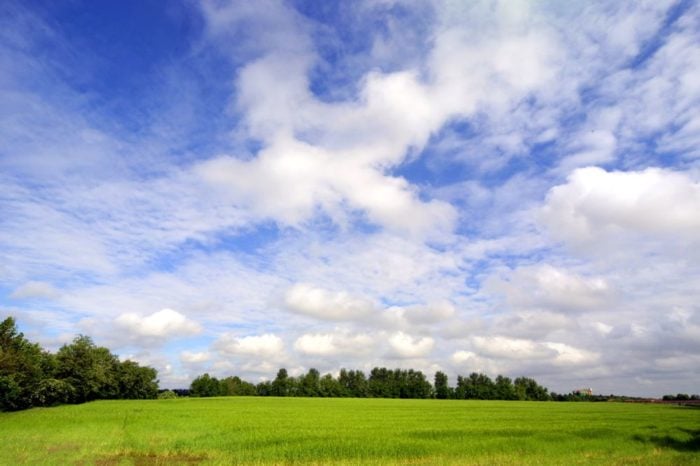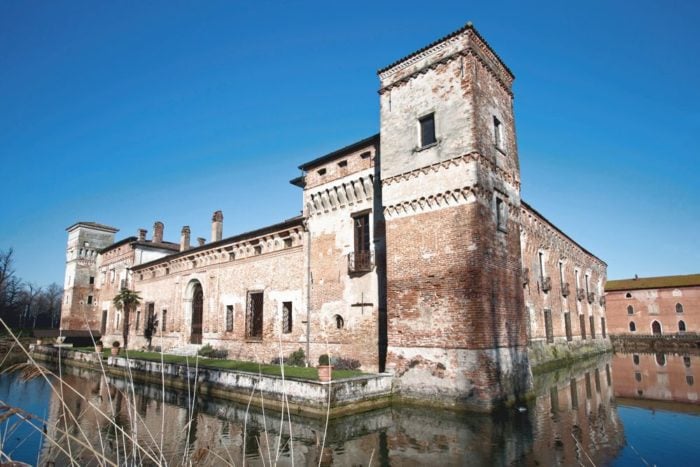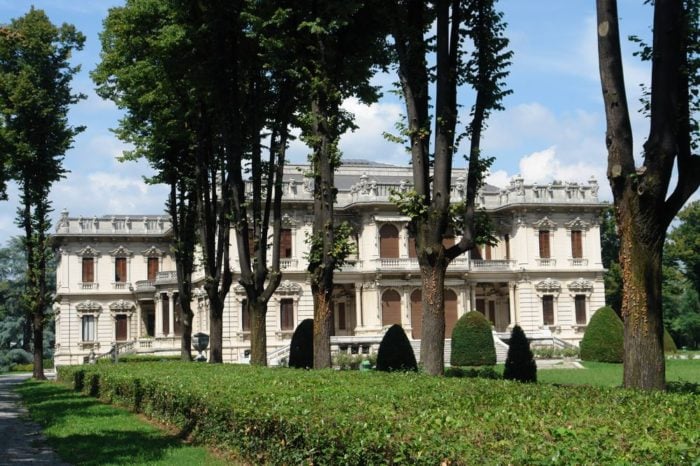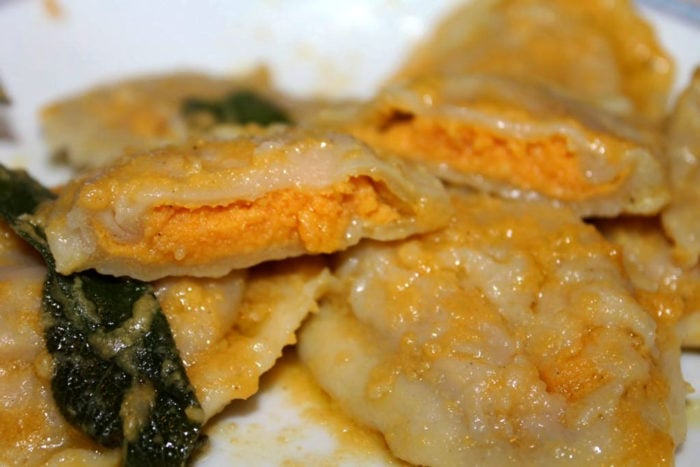
Traditionally known as the “lowlands”, for a long time the area remained excluded from tourism, strictly speaking. It is a great area, not only for its size but also for its rich heritage of history and art. This land is a true surprise: a vast countryside crossed by the three main rivers in the Brescia province: Oglio, Mella and Chiese which, through the centuries, have made the soil fertile and marked local history. Ancient hamlets nestling around the parish church alternate with cultivated fields, rows of mulberry trees and poplars, canals, streams and drainage channels to mark the old rural boundaries.
Huge old farms and modern agricultural enterprises that testify generations of hard-working countrymen, but also villas and country residences, and castles to guard the river ports. A fascinating scenario, perhaps somewhat overlooked in the past but which is now flourishing once more thanks to the natural environment, an ideal proposal for itineraries through the greenery: on foot, on bike, on horseback and, why not, in a canoe. Nature trails winding through parks and reserves along the riverbanks, recounting the history, economy and soul of the area.
There are tracks and cycling paths through the Parco Regionale dell’Oglio Nord which extends from Lake Iseo to the boundary with Cremona, with interesting examples of rural architecture, locks and bridges, or that of the Parco del basso Chiese and the Parco del Basso Mella.
Splendid walks can be also be taken through Parco del Fiume Strone which snakes through ancient rural boroughs such as Scorzarolo close to Verolavecchia, country residence of Domenican friars from the late 1400s until the end of the 18th century. A true oasis of nature is Parco Bosco del Lusignolo with its lakes, cycling paths, sports facilities, a didactic trail for sight-impaired persons, a horse riding track as well as picnic areas and recreation of all kinds.

So much nature, and art is no less.
Gems of the Brescia lowlands are the two huge canvases by Giovan Battista Tiepolo, painted around 1738 and hung in the parish church at Verolanuova, but surprisingly rich are the vallas and palaces erected by the most important families in Brescia, starting from the 15th century, as a sign of their prestige and honour or as comfortable holiday residences. Often still inhabited by descendents of these noble families, they are not all open to the public but the variety and importance of their architecture makes them worth looking at.
The influence of the Martinengo family suggests a pleasant tour to the castle in Padernello in the Borgo San Giacomo district, to those in Villagana and Villachiara and, finally, to the ruins in Barco close to Orzinuovi. Verolanuova and Pralboino, instead, are worth a visit for the Gambara palaces, the 16th-century building at Verolanuova now housing he municipal offices. Evocative but built over the remains of previous buildings are the Bonoris Castle in Montichiari and the one in Pontevico. Among the many fortresses carrying traces of their importance is the one in Orzinuovi, with its characteristic square lined by ancient porticoes palaces and the one in Urago d’Oglio.
Villas and historical palaces can be found in every district, but absolutely worth seeing are Villa Mazzotti in Chiari where art déco is combined with neoclassic style, Villa Calini Morando at Lograto – restyled in the 1700s – which suddenly appears at the end of an avenue lined with sandstone statues. The solid but elegant structure of the 15th-century Avogadro is worth seeing in Bagnolo Mella. Palazzo Feltrinelli: this grandiose building constructed in the late 1700s in the open countryside, surrounded by brick walls, can be found in Gerolanuova, an outlying district of Pompiano. Villa Suardi at Ludriano is a harmonious nucleus of historical buildings still surrounded by a moat. At Seniga, in the estreme south of the province, there is the 17th-century Villa Fenaroli, a set of buildings with a stupendous perspective over the river and a terraced garden that terminates in a garden with secular trees planted along the banks of the Oglio. Entirely built in brick is the severe Palazzo Lechi in Calvisano. One of the most important buildings in the lowlands for its architectural and historical value is Villa Lechi in Montirone, a fine work by architect Turbini. A unique example is the borough of Monticelli d’Oglio, one single rural court dating from the 17th century.

Art and culture are magnificently expressed in the big churches conserving precious works of art and equally in the parish churches and the tiny country Places of worship. The parish churches, all of ancient origin and rebuilt from the 12th century onwards, are of particular interest for their important series of frescos. They can be found in Montichiari, Carpendolo, Seniga, Quinzano, Dello and Orzivecchi. Not to be missed in Chiari is Pinacoteca Repossi with canvases, sculptures, prints and engravings with some percious works by Pollaiolo, Mantenga, Rubens, Rembrandt, Tiepolo and Canaletto.
Rich in traces of prehistorical, Roman and Longobard eras, the history of the plains is shown in the archaeological collections at Leno, Ghedi and Gottolengo and in the important museums at Remedello, inside the richly frescoed 15th-century Chiesa dei Disciplini, and at Manerbio in Palazzo Luzzago, now the Municipal Offices.
There are many museums dedicated to agricultural history. A step into the past is offered by the ancient Motella mill in the Borgo San Giacomo district. Finally, it is curious to find at Dello the Rosina Storchio lyrical museum, at Travagliato the Quattro Torri music museum and at Acqualunga the Fiamenghi ornithological museum.

Social life is thick with events in the many country communities, with sagras, fêtes and religious feasts where the genuine flavours of the past survive. Autumn is the best season to enjoy lowland tastes to the full. Food enthusiasts must not miss: the Fiera del Casoncello Bresciano at Barbariga, the Sagra del Pa’ e Furmai (bread and cheese) at Leno, the Honey Mushroom Sagra at Dello, that of the “pursel” (pig/pork) at Fiesse or the grape and wine festivals at Capriano del Colle.
Of national importance is “Travagliato Cavalli” every year at the end of April. Crafts and skills of yesteryear are represented at “Mestieranda” held in May at Cigole. Historically important and much attended is the re-evocation of the Battle of Maclodio (1427) with a jousting tournament and parade in costume recalling the actions of the Count of Carmagnola, every 5 years in September.
The hills of Capriano del Colle render a tiny but precious quantity of DOC wine and IGT Montenetto. Although the town can thank industry for its economic success, inhabitants still nurture their passion for agriculture by celebrating the Sagra dell’uva every year in September with decorated floats. First historical mentions of the town go back to the Christian era and then the Longobard epoch and already refer to wine-makers and peasants. Not to be missed is the 12th-century Madonna della Neve sanctuary conserving an altar piece produced by Bagnadore in 1593 and two precious frescos. The municipal offices are housed in the beautiful Bocca palace with rooms richly decorated with elegant stuccoes. Capriano del Colle hosts the Monte Netto national poetry award.
Cuisine in the lowlands is closely linked with farming but also the presence of so many waterways. Traditional cuisine is a mix of flavours influenced by Mantua, Cremona and Bergamo. Salamis, soft cheeses, boiler and roast poultry, and then tripe, pumpkin-stuffed ravioli, stewed meats and pork braised with mushrooms or cabbage, freshwater fish and frogs are the tasty dishes proposed not only by trattorias and farms, but also famous restaurants. Some farms also have rooms to accommodate guests.